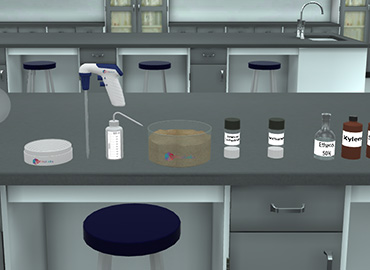The Diels-Alder reaction is one of the most important reactions of organic chemistry since they are used in synthesizing six-membered ringed cyclic organic compounds.
It is also considered as a [4+2]-cycloaddition reaction because it involves the an addition reaction between a conjugated diene molecule and a substituted alkene (dienophile) in order to produce a substituted cyclohexene system.
Specifically, 4 π-electrons from the conjugated diene and 2 π-electrons from the dienophile are involved in the reaction. Therefore, it is counted as an electrocyclic reaction whose driving force is the formation of new σ-bonds as they are energetically more stable than the π-bonds.
Factors Affecting Diels-Alder Reaction
The electron density of the carbons taking part in the addition reaction. The steric energy of the transition state and the end product. The frontier orbital energy levels of the reactants.
Diels-Alder Reaction Examples
-
The cycloaddition of anthracene (conjugated diene) and maleic anhydride (dienophile) to form 9,10-dihydroanthracene-9,10-endo-a3-succinic anhydride
- The reaction between butadiene and ethylene
- The reaction between furan and maleimide
- The reaction between 1,3‐butadiene and maleic anhydride
- The reaction between pyrrole and acrylonitrile
Diels-Alder Reaction Applications
Diels Alder Reaction is a very important reaction in organic chemistry and has many applications like:
-
The production of vitamin B6.
- Natural materials synthesis like plastics and rubber. Plastic is one of the most important applications of Diels Alder Reaction.
- Steroids synthesis (ex: cortisone and Vitamin D).
- Preparation of cortisone and cholesterol.
- The synthesis of prostaglandins F2α and E2.



















